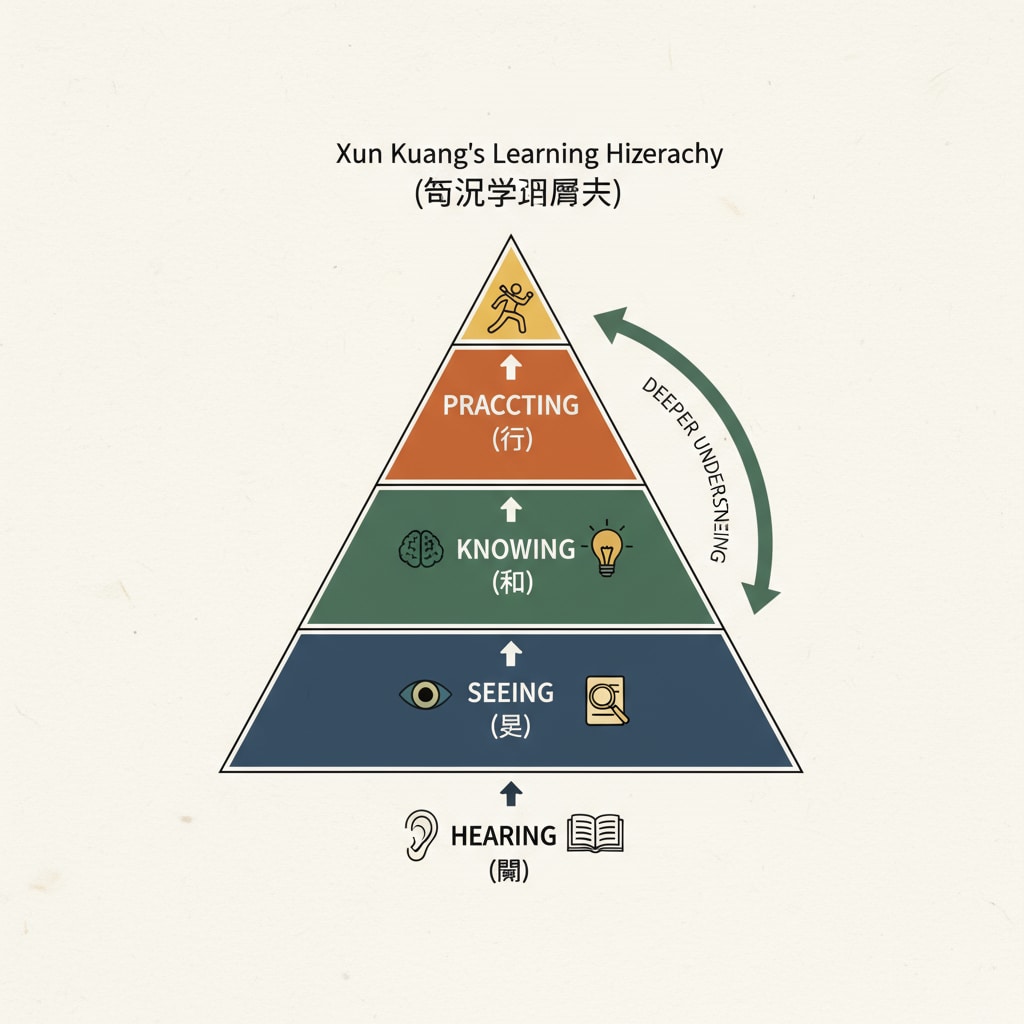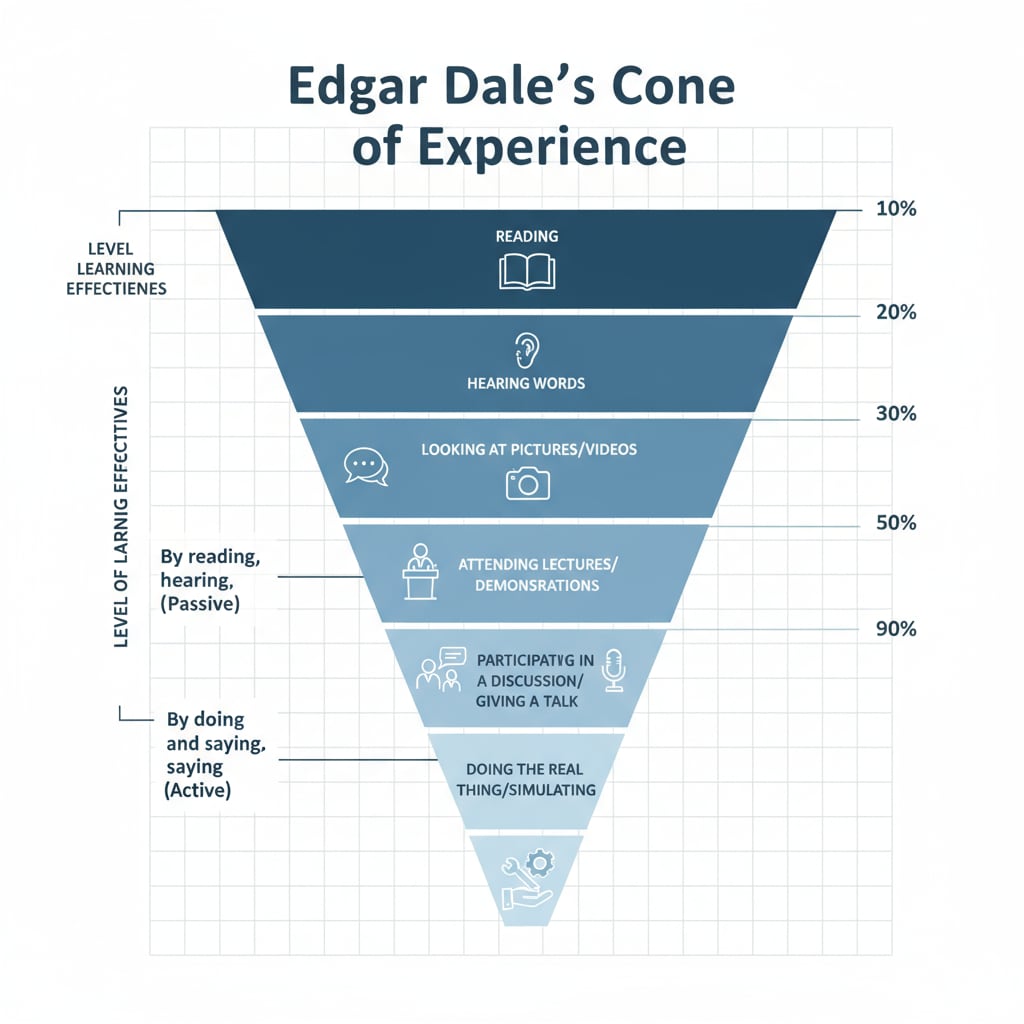Learning theories, Xun Kuang, Cone of Experience, and experiential learning are concepts that have shaped our understanding of how knowledge is acquired. Throughout history, educators and philosophers have sought to understand the most effective ways to learn. In this article, we will explore why “learning by doing” stands out as a profound method of learning, drawing insights from ancient wisdom and modern educational research.
The Wisdom of Xun Kuang: A Hierarchy of Learning
Xun Kuang, a renowned Chinese philosopher, proposed a hierarchy of learning. His ideas emphasized that true understanding goes beyond mere theoretical knowledge. Xun Kuang believed that learning starts with reading and listening, but it reaches its deepest level when one engages in practical action. For example, reading about a skill can provide basic knowledge, but actually performing the task allows for a more comprehensive understanding. This early perspective laid the foundation for the concept of experiential learning.

The Modern Twist: Edgar Dale’s Cone of Experience
Fast forward to modern times, Edgar Dale introduced the Cone of Experience model. This model visually represents the effectiveness of different learning methods. At the top of the cone are passive learning methods like listening to lectures and reading, which are less effective in terms of retention. As we move down the cone, we encounter more active forms of learning such as discussions, demonstrations, and finally, hands-on experiences at the bottom. Dale’s model suggests that the more actively involved we are in the learning process, the better we retain information. Cone of Experience on Wikipedia provides a detailed overview of this influential model.

The connection between Xun Kuang’s ideas and Dale’s model is striking. Both emphasize the importance of moving beyond passive learning and engaging in active, hands-on experiences. This is where the concept of “learning by doing” truly shines.
A Personal VR Experience: The Power of Multi-Sensory Learning
To further illustrate the power of “learning by doing,” let’s consider a personal VR experience. Imagine using VR to learn about a historical event. Instead of simply reading a textbook description, you are immersed in the scene. You can see the environment, hear the sounds, and interact with virtual elements. This multi-sensory engagement significantly enhances the learning experience. It makes the knowledge more tangible and memorable. As a result, you are more likely to understand and retain the information compared to traditional learning methods.
In K12 education, incorporating hands-on activities, experiments, and real-world projects can greatly benefit students. It allows them to apply theoretical knowledge, develop problem-solving skills, and gain a deeper understanding of the subject matter. For instance, in a science class, conducting experiments instead of just reading about them can make the concepts more understandable.
Readability guidance: We’ve used short paragraphs and simple language to make the content accessible. Each section focuses on a key aspect of learning theories and their connection to experiential learning. Transition words like “for example,” “as a result,” and “fast forward” help to make the flow smooth. The use of examples and references to external sources adds credibility to the discussion.


